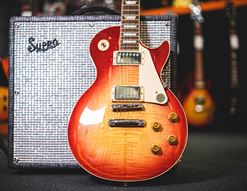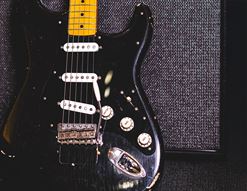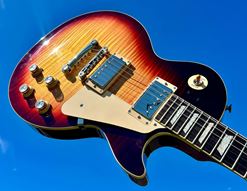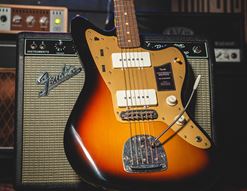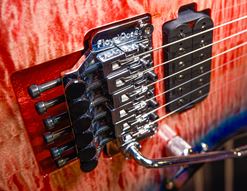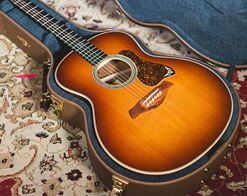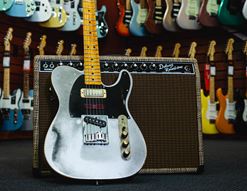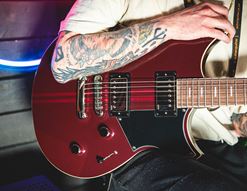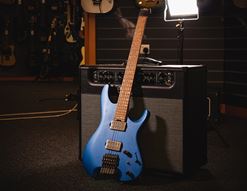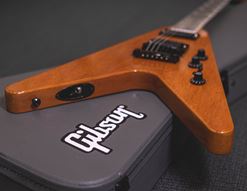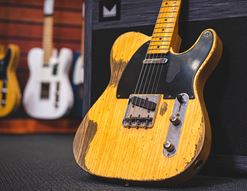You’ve reached a plateau in your guitar playing. You sound good, but not quite professional. Your gains have slowed a little, and the rewards come a little less readily than back when you started.
What’s happening?
Nothing unusual, so don’t panic! Whatever stage you are at in your guitar playing path, the levelling up always gets a little bit more subtle and incremental after a while. When this periodically happens, lots of us tend to start making mistakes. What mistakes? I’ll tell you below, along with tips to remedy those mistakes, and some avenues to consider in order to open up your playing again.
I guarantee that you’ll find some good, usable knowledge in this blog, so come with me and see if I can’t help you back onto the road of guitar greatness!

Forget Shredding, Work on Your Timing
You’re likely to have heard this already, but it’s important, so I’ll say it once more. Stop spending all of your time learning shreddy solos. Unless your timing is absolutely spot-on, then you need to use your shred hours to improve your overall timing instead.
Your timing is already perfect? Really? Good for you, and I don’t mean to be rude, but I bet it’s not. Everybody needs to work on their timing, and even the best players in the world dedicate specific hours to honing that one area of their technique. It’s the mark of an amateur to be able to sweep pick backwards but to be unable to get in time with a band and play in the pocket consistently.
How to fix this? Two ways.
Strategy 1
Firstly, find brilliant rhythmic songs that you like, and simply play along with them again and again. Don’t stray from rhythm playing, and be critical of how you are fitting into the band’s sound.
Are you meshing with the record? Why not? It’s your timing, mostly. Record it if you can, because it’s often a bit of a shocker to hear what you are actually doing, versus what you imagine you’re doing. Face the truth!
Strategy 2
The other way is to set a metronome and just spend 30 minutes playing as close to the beat as is humanly possible. Don’t get carried away and start messing about: stick to a simple rhythm and try to make that metronome beat vanish with your playing: that’s when you know you aren’t playing ahead or behind the beat. That’s what it takes these days.
Check Out the CAGED System
This is for when you want to upgrade your writing and improvisation skills. The CAGED system is unique to the guitar, and lots of online courses will take your money to overly explain it, but here’s what it is in simple terms:
- You take the chords C, A, G, E and D. All majors.
- These chords don’t work together musically, but that isn’t the point.
- You take the hand shapes and play any of those 5 chords in any of those 5 ways.
- In other words, a C chord can be played in the traditional open position. It can also be played like a power chord, using the A major hand shape, and it can also be played using the G hand shape at the 8th fret. And so on.
- This opens up the fingerboard and connects it all in a sensible and musical way. Those shapes are basically telling you where you can go and stay musically correct. You quickly learn how to connect and use this merely by playing.
Once you’ve mastered the idea of the CAGED system, you can use it for chords, leads, rhythm parts, counterpoint, improvisation and more. This is a very brief and general introduction to the system, but I definitely recommend taking it further if you want to unlock some new areas on that fingerboard!

Left-Hand Fingering: Anticipate the Note Journey
Instantly upgrade the quality of your playing by using the right finger at the right place. There are many ways you can approach any guitar part, but not all of them will give you a smooth performance. Selecting the best ‘journey’ that your left hand takes when playing means tightening up note changes and performing better transitions.
I have two examples for you.
Example 1
Firstly, if you are playing a C note, for example, and plan to go to the Bb next, have a finger on each note (index on the Bb, ring finger on the C) so you can play those notes efficiently. It sounds better than fumbling it all by moving your hand, because your fingers are already where you need them to be, ahead of the notes being played.
Example 2
Secondly, if you are playing an open C chord and want to change to an open G, for example, consider using the version of C where your pinky finger frets the G on the top E string. When you change chords, simply keep your pinky anchored to that G note and the whole transition sounds smooth and lush.
Anchoring notes means knowing in advance where you are going. Anticipating future notes means you are well prepared and well-rehearsed, therefore you sound more like a professional. It’s a small thing but then it’s the small things that add up!
Accuracy: Bends and Vibrato
The areas of vibrato and string bending are where intermediate guitarists really show their lack of finesse. Thankfully, both areas are easy to improve on, if you make mindful practice of them.
Vibrato
For vibrato, listen to the way singers use it: mostly, they hold a note for a little while before applying vibrato. Do that! And pay attention to the difference between using vibrato in time and out of time: it makes a significant impact on your overall sound. Wide vibrato is not something you should always just default to, either. Use it sparingly.
Bends
As for bends, there is nothing worse than out of tune bends! You can practise by playing the ‘target’ note and then bending up to it, but really pay attention to the amount of pressure required for bends across different areas of the neck, since string tension is not a consistent thing. Scale lengths differ too, so being mindful of the physicality involved - whilst developing a good ear for pitch - is how you’ll win here. There are no shortcuts, you have to just work at it.
Silence
Do nothing. This one isn’t as easy to accomplish as you think! I don’t mean ‘do not play the guitar’, I mean allow space when you’re playing so that your audience can put themselves into your music a little. Guitarists are uniformly terrible at leaving gaps in their lead work: we all love impressing folk with bombardments of notes, but the effect wears off very quickly and leaves us looking like egotistic amateurs.
Instead, listen again to how singers improvise, or indeed horn players. They phrase things like words and sentences, and so their music takes on the properties of storytelling. Adopting that frame of mind will make you a much more interesting and nuanced player, not to mention a generous one to both other players and those listening.

Investigate the Modes
The Modes can cause people to get a bit defensive. Lots of players never go any further than learning the blues scale, and whilst I’m not knocking that, it’s also not too difficult to add extra colours to your palette!
I’m not saying you have to turn into Frank Zappa here, but even a cursory exploration around the world of the Modes will reveal new pathways to interesting and exotic melodies. If you are bored with your own guitar playing, then so will everybody else be too. They may not say so, but they will be. You owe it to us all to try a little harder here and leave the generic stuff to the amateurs.

We are All Learners
I hope these tips and practices can transform your playing a little, and level you up somewhat. They are more about intention and approach, because those are often the things that are left unspoken when we consider a practice regime. Being a curious listener is important, as is putting into practice what you hear and learn.
If you spend all day listening to John Coltrane and then go through your usual classic rock motions as soon as you have a guitar in your hands, then you’ve wasted a crucial link to a more interesting place. Figure out some of that Coltrane! It’ll most likely be unlike what your fingers normally do, and that in itself makes it a wonderful challenge.
Most of all, be mindful of what you do when you are actually playing the guitar, not just thinking about it. Appreciate the difference between the two, and work on bringing them together. And have fun!


